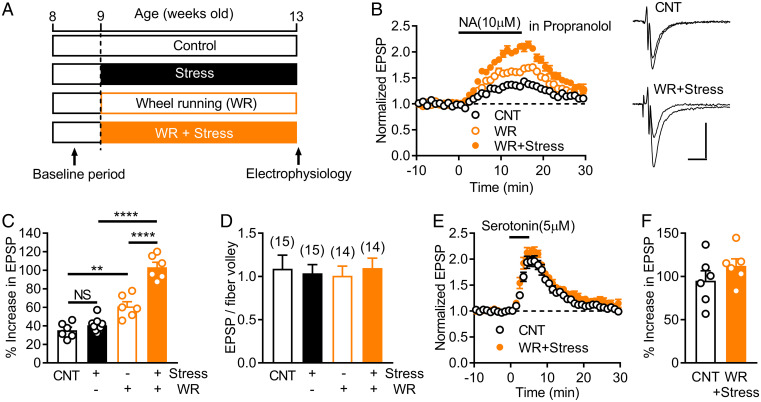Fig. 5.
Synergistic augmentation of noradrenaline–D1 receptor signaling by chronic stress and exercise. (A) Timeline of chronic restraint stress and increased voluntary exercise by wheel running (WR). (B) Effects of chronic restraint stress and WR on NA-induced MF synaptic potentiation mediated by D1 receptors. Recordings were made in the presence of propranolol. Sample traces show averaged field potentials before and during NA application (scale bars: 10 ms, 0.2 mV). (C) Summary of effects of stress and WR on D1-mediated potentiation. Two-way ANOVA (stress effect, F1,23 = 35.29, P < 0.0001; WR effect, F1,23 = 122.9, P < 0.0001; interaction, F1,23 = 21.36, P = 0.0001) followed by Tukey's test (**P = 0.0012, ****P < 0.0001). (D) Lack of effects of stress and WR on the basal MF synaptic efficacy assessed by EPSP to fiber volley ratios. The number of data is shown in the graph. (E) Effects of stress and WR on serotonin-induced MF synaptic potentiation. (F) Summary of serotonin-induced potentiation.

